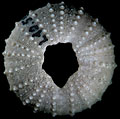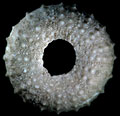The Echinoid Directory
Loriolia Neumayr, 1881, p. 570
[=Heterotiara Pomel, 1883, p. 105 (objective) ]
| Diagnostic Features |
|
|---|---|
| Distribution | Lower Cretaceous (Neocomian - Aptian), Europe, North America. |
| Name gender | feminine |
| Type | Pseudodiadema bourgueti var. foucardi Cotteau, 1851, p. 286, by original designation. |
| Species Included |
|
| Classification and/or Status | Euechinoidea, Calycina, Phymosomatoida, Emiratiidae. |
| Remarks |
|




